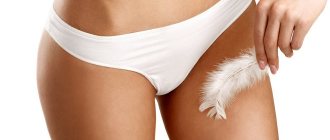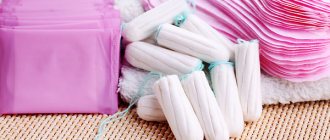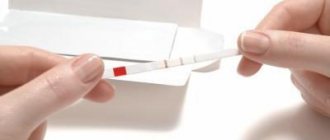Menstrual cup, mouth guard - a small bell-shaped container with a stem/tail or ring for quick and easy removal. This simple device has been saving women for decades in many countries around the world during critical periods. And here, menstrual cups are gaining popularity.
Why are mouth guards not yet as popular as the sanitary pads and tampons we are used to? The answer is simple: many girls and women still have more questions about this device than answers. In addition, stereotypes and myths also work against the cap. It's time to find out more.
Choosing material
Most modern cups are made from medical grade silicone. This is a completely biocompatible, and therefore hypoallergenic and safe material.
Some mouthguards are made of latex, for example, American Keeper. This is the material of the first menstrual cups, which today is chosen by those consumers who value everything natural and organic, because latex is the processed sap of the rubber tree. However, it is not suitable for women with rubber allergies.
Popular manufacturer Meluna produces bowls made from thermoplastic elastomer, or TPE, a mixture of polymers. The material is particularly soft and velvety, pleasant to the touch. It is also used for the production of children's products, which means it is subject to the highest safety requirements.
Thus, unless you are allergic to latex, bowls made of any material are suitable for you. If you are prone to various allergic reactions, including to pollen or food, choose a mouth guard made of TPE or silicone.
What is the product?
There are different models of menstrual cups, but most of them resemble a funnel or cap in appearance. The mouth guard is made from flexible materials. The cup is placed in the vagina during menstruation to trap secretions. After a few hours, the liquid accumulated in the tray must be removed. The washed cap can be installed again.
The menstrual cup consists of several parts:
- Body of the mouthguard. The main element of the product. Some models have a scale of marks, thanks to which you can find out the volume of your discharge. This is usually needed for medical purposes.
- Tail. Located at the bottom of the bowl, there are several options for its design. Some models have a long tail, which can be trimmed if necessary.
- The base is a ring for gripping. Most menstrual cups have this feature between the body and tail to make it easier to use. Many models also have a bezel at the top, which can be regular or extended. Sometimes there is an additional rim, which is a transition to the body of the bowl. The material here is thicker and tougher.
- Ventilation holes. The menstrual cup may also include them. Mouth guards differ in their size, quantity, and location.
Medical silicone is usually used to make menstrual cups. There are products made from elasto-thermoplastic (thermoplastic rubber) and natural rubber.
Menstrual cups became widely known relatively recently, although they appeared in the 30s of the last century. At the same time, the world learned about tampons. Menstrual cups were used only by liberal women, since in those days it was considered indecent to touch one's genitals.
The popularity of mouth guards began to grow only in the 80s, when the issue of the harmlessness of products used during menstruation became acute. In 2011, a large-scale study was conducted, in which several hundred women took part. More than 80% of participants easily handled the menstrual cup, about 40% of women decided to replace sanitary pads and tampons with it, and about a third remained neutral.
Hard or soft
Bowls can have varying degrees of softness. The stiffer the material, the easier the mouth guard opens once inside. Manufacturers usually designate such a cup as Sport, and this is no coincidence. Because hard menstrual cups are recommended for those who play sports. After all, the risk of leakage with them is minimal. Among these are MeLuna Sport, Yuuki Classic, Keeper.
Women with highly sensitive tissue may experience discomfort while wearing a hard cup, including a feeling of incomplete emptying of the bladder or a frequent urge to urinate. In this case, it is better to choose soft options, for example, Meluna Soft or Viva Cup, which are not completely felt inside. However, you will have to spend some time learning how to insert them correctly, since they open worse than hard ones.
There are also cups of medium elasticity that are suitable for most: Lunette, DivaCup, LadyCup, Meluna Classic.
Optimal shape
There are 2 types of bowls: V-shaped and bell-shaped. The first is longer and has a pointed base that can protrude from the vaginal opening. Thanks to this, it is easy to remove, including for women with a medium and high cervix.
The bell-shaped cup has an expanding rim, due to which it can be located higher in the vaginal vault than V-cups. This is an additional guarantee that the bowl will not accidentally fall out. Therefore, they are recommended for women with weak pelvic floor muscles.
The German brand Fun Cup produces unique anatomically shaped cups - in the form of an elliptical cone with a curved tip. The manufacturer claims that the mouth guard adapts to the shape of the body, and there is virtually no risk of leakage or accidental loss. It is easy to insert and remove and very comfortable to wear.
Finding out which shape is right for you can often only be done through trial and error. However, we can definitely advise that women with a high cervix are better off choosing V-shaped models, since they are longer.
What are the contraindications?
Menstrual cups have some contraindications:
- virginity - there is a possibility of violating the integrity of the hymen;
- chronic gynecological diseases, since in this case the cup will become a source of infection;
- the presence of an intrauterine contraceptive – there is a risk of the device dislodging, but according to research, the likelihood of this is minimal;
- inflammation – the barrier function of the pelvic organs may be impaired, so introducing a menstrual cup will only worsen the problem.
A menstrual cup is economical, safe and reliable. The universal hyena remedy should have exactly these qualities, making life easier for girls during menstruation. You may not be able to choose the right model for you the first time, but through trial and error you will finally find “the one” and are unlikely to return to tampons and pads.
If you have experience using menstrual cups or are still unsure about their convenience, write in the comments!
S, M or L: how to choose the size
Menstrual cups from all manufacturers are usually presented in 2 sizes: S or L, A or B, 1 or 2. Some brands include additional sizes in the line: for low or high cervix, teenage, short.
Typically, S is recommended for women under 25-30 years of age without experience of natural childbirth, L - for those who are older and/or have gone through vaginal birth. When choosing a size, it is worth considering factors such as:
- Body type. Petite women choose smaller sizes, tall and large women - vice versa.
- Fitness level. Regular exercise also strengthens the pelvic floor muscles, which allows you to choose a smaller mouthguard.
- Sexual experience. For virgins, size S is optimal.
- Intimate plastic surgery. After them, a woman will most likely suit a smaller bowl diameter.
However, these are only approximate recommendations. When choosing a size, you should focus on indicators such as length, diameter and volume indicated by the manufacturer on the packaging.
Factors influencing choice
When choosing a menstrual cap, you need to consider the following factors:
- Age . It is believed that over time, women's vaginal muscles weaken. Therefore, under the age of 35, it is recommended to use moon cups in sizes S, A, 1. Sizes M, B, 2 and others are for women after 35 years.
- Childbirth . During childbirth, a woman's genitals undergo changes. The size and shape of the vagina, the location of the uterus, and muscle elasticity change. Based on this, size S is suitable for use by women who have not given birth or who gave birth by caesarean section. Size M should be chosen by women after childbirth. If before this your choice was size S, after giving birth, feel free to switch to M.
- Woman's physique . A woman’s external parameters influence the selection of the product. Women with a thin build and short stature use products in size A, with heavy bleeding B. Tall women or with a dense build and heavy weight buy products in size M or larger. As a rule, the physique corresponds to the size of the genitals. So, in women with a thin physique, the vagina is narrow. There is simply no need to buy a large size hygiene product.
- Physical exercise . The muscles of the genital organs of women tend to relax in the absence of physical activity or training and become stronger under their influence. Women who play sports have well-developed abdominals. The muscles of the uterus are constantly trained. As a result, they become elastic. In this case, women need to choose a mouthguard of size A. In women who lead a passive lifestyle, move little, the muscles of the genital organs gradually atrophy and lose their elasticity. They are not able to hold a small mouth guard. Even if the discharge is scanty, you have to buy a mouthguard of size M, B.
Before choosing a mouth guard, evaluate your weight, build, length of the vagina, muscle elasticity, amount of discharge, and features of the genitals.
Length is one of the most important parameters
If the bowl is too short, you may have difficulty removing it. If it is too long, there will be discomfort when wearing and leakage. Therefore, the length of the cup should correspond to the length of the vagina, that is, the distance to the cervix. You can measure it yourself, preferably during menstruation, since this value may change during the cycle. Or contact a gynecologist with this question and get a completely accurate result.
There are 3 types of menstrual cups depending on the length of the product:
- Short, or for a low cervix - 38-44 mm: Meluna Shorty, Merula Cup, Lily Cup One.
- Medium, for the middle cervix – 45-50mm: LadyCup S, Lunette S, Organic Cup S, AneerCare S.
- Long, or for a high neck - 51-57 mm: Meluna L, Lunette L, LadyCup L, VivaCup S, DivaCup S.
Let's decide on the volume of the bowl
Be sure to pay attention to the capacity of the cup in milliliters, focusing on the abundance of your menstruation. The volume determines how often the tray will need to be removed and washed. On average, a pad with 3 drops per pack absorbs 15 ml. The capacity of the bowls ranges from 15 to 35 ml:
- small – 15-24 ml: Meluna Shorty, Meluna S, Lunette S, VivaCup L;
- medium – 25-31 ml: Lunette L, DivaCup L, AneerCare L;
- large – 31-35 ml: Meluna XL, LadyCup L.
Bowls with a large capacity are longer and wider, so they are not suitable for everyone. It is optimal to choose a medium value: it will not need to be washed frequently and will not cause any discomfort.
Universal advice
When in doubt, choose a package with two sizes of mouthguards. Many manufacturers offer such a solution: Fun Factory, Meluna, DivaCup. This is cheaper than buying two bowls separately. And if wearing both seems comfortable to you, then the larger one can be used on days with heavier discharge.
Rating of popular brands of menstrual cups
We compared well-known brands and selected the best for you.
| Name, country of origin | Peculiarities | Nomination |
| Fun Factory | It has a unique shape that adapts to the contours of the body. Easily removed due to the solid tip, there is no tail. Conveniently stored in an antibacterial envelope with a magnetic closure. | The most futuristic. |
| Yuuki, Czech Republic | Available in 3 different hardness levels and 2 sizes. The kit includes a sterilization bowl and detergent. Due to its high degree of rigidity, it is suitable for athletes and women leading an active lifestyle. | The most “sporty”. |
| LilaCup, Russia | Easily opens due to compacted rings inside the mouthguard, as well as a denser upper part compared to the lower one. Affordable price - from 250 rubles. | The most economical. |
| Meluna, Germany | Wide selection of colors, sizes, hardness levels and tail options for easy removal. | The most diverse line of bowls. |
| Lunette, Finland | It has been on the market for more than 10 years. Easily removed due to the soft, thin, flat stem. It attaches securely and has a low risk of leakage. | The most reliable and time-tested. |
| CupLee, Russia | 9 color options. It is securely attached due to the thick silicone ring-rim. Suitable for women with a sensitive bladder due to the special softness of silicone. | The most “inconspicuous”. |
| Venus Cup, USA | Designed for heavy discharge. Size S holds up to 22 ml, which is 10% more than the average bowl of the same size. Thanks to the special rim, it is easy to insert and remove, and opens correctly. | Ideal for heavy periods. |
| Femintimate Eve Cup, Spain | Available in 2 sizes, suitable for sports. Size L is ideal for women who have given birth and have heavy discharge. Average price – 1000 rubles. | Excellent combination of price and quality. |
| Masmi, Spain | It has 3 sizes and is made of TPE, which guarantees safety, hypoallergenicity and comfortable wearing. | The most comfortable and pleasant to the touch. |
Exclusive Innovations
Many manufacturers are developing devices that are unlike all others, offering customers additional benefits when using a hygiene product. Thus, the Spanish brand Enna, the British Amycup and the American Keela produce cups with an applicator that facilitates insertion. You can install such a mouthguard correctly on the first try.
A feature of the Chinese brands AneerCare and Viola is a convenient valve that allows you to quickly empty the cup without removing it from the vagina. This is convenient if there are no suitable conditions or access to water nearby.
We can’t help but mention the smart cup LoonCup, which will help you monitor your menstruation: the mobile application analyzes the nature of your discharge, reminds you that it’s time to rinse your mouth guard, and notifies you when your cycle begins.
Advantages and disadvantages
There are many benefits that speak in favor of menstrual cups:
- Saving. One menstrual cap can be used for up to 10 years. A quality product is more expensive than other hygiene products, but in the end all costs are recouped many times over.
- Environmental factor. Used sanitary pads and tampons are waste, harmful to the environment and take hundreds of years to decompose. If you count how many of these products are used and then thrown away during the use of one menstrual cup, the scale will be amazing.
- One purchase solves the problem for a long time. A menstrual cup takes up little space, you can carry it in a handbag or take it with you on the road. There is no need to be afraid that hygiene products will run out, and there will be no store nearby with the necessary assortment. All these problems are solved by one small device.
- Can be used for up to 12 hours. Specific timing depends on the size of the cup and the volume of discharge. If sanitary pads and tampons must be changed every 3-4 hours, then the menstrual cup can last much longer without harm to the body.
- Comfortable feeling. When installed correctly, the menstrual cup does not cause any inconvenience. Her ponytail does not get wet, which happens when using a tampon. Another advantage of mouthguards over them is the absence of a feeling of dryness. Unlike sanitary pads, a menstrual cup does not create a greenhouse effect.
- No smell. When using sanitary pads and tampons, secretions are absorbed into them and the material begins to smell unpleasant. The menstrual cup only collects fluid and is located inside the vagina, so there is no need to worry about odors with proper care.
- No contact with secretions. They immediately enter the container, so if it is emptied in a timely manner, there is no unpleasant contact with mucous membranes and skin.
- Health safety. High-quality menstrual cups are made from safe materials. They are hypoallergenic; when used, the vaginal microflora is not affected.
- Stealth. The menstrual cup is inserted into the vagina, so it is completely invisible from the outside. Her tail is small, which eliminates the embarrassment that is possible when using tampons.
- No restrictions on physical activity. With a menstrual cup you can play sports or go to the pool.
- Easy to care for. The product needs to be boiled twice a month (before and after use).
The list of benefits of a menstrual cup is impressive, but it does not come without some disadvantages:
- Skills in using a mouthguard are required. It must be inserted carefully; if done incorrectly, there is a risk of leakage.
- The need to rinse the bowl. At home everything is simple, but outside the house you need to have water with you. During the day, you can get by with wet wipes and rinse the product thoroughly later.
- After installing the bowl, you need to wash your hands. This factor is a conditional disadvantage, since the same measures are needed when installing or removing a tampon or replacing a sanitary pad.
- Sterilization of the bowl. It must be done between cycles. The procedure takes a little time, so it is not a significant drawback.
There are minimal contraindications for the menstrual cup:
- inflammation and infection of the genital organs;
- swelling in the vagina or cervix.
The presence of these contraindications is a disadvantage only in comparison with the use of sanitary pads; in these cases, the ban also applies to tampons.
Still have questions?
If you are in doubt which menstrual cup is best, read our material with answers to 16 important questions or consult with a gynecologist at the Taganka Women's Medical Center or. A specialist will help you decide on the size, shape and degree of rigidity of the cup, assessing the location of the cervix and the level of training of the pelvic floor muscles.
Contraindications to the use of a cup for the menstrual cycle are inflammatory diseases of the genitourinary system or recent surgical interventions. Discuss with the center's gynecologist whether its use is possible in your case. Sign up for a consultation today!
Product care
The menstrual cup does not require complex care. After each emptying, it should be rinsed, first with cold water, to reduce the risk of staining. To clean, you can use mild soap or a special cleaner for menstrual trays.
Before first use, the menstrual cup must be sterilized. Sterilization is also recommended between cycles. 3-5 minutes of treatment is enough.
The menstrual cup should be stored in an airtight container. If the kit does not include a bag, you can purchase it separately, sew it yourself, or select a similar finished product.











